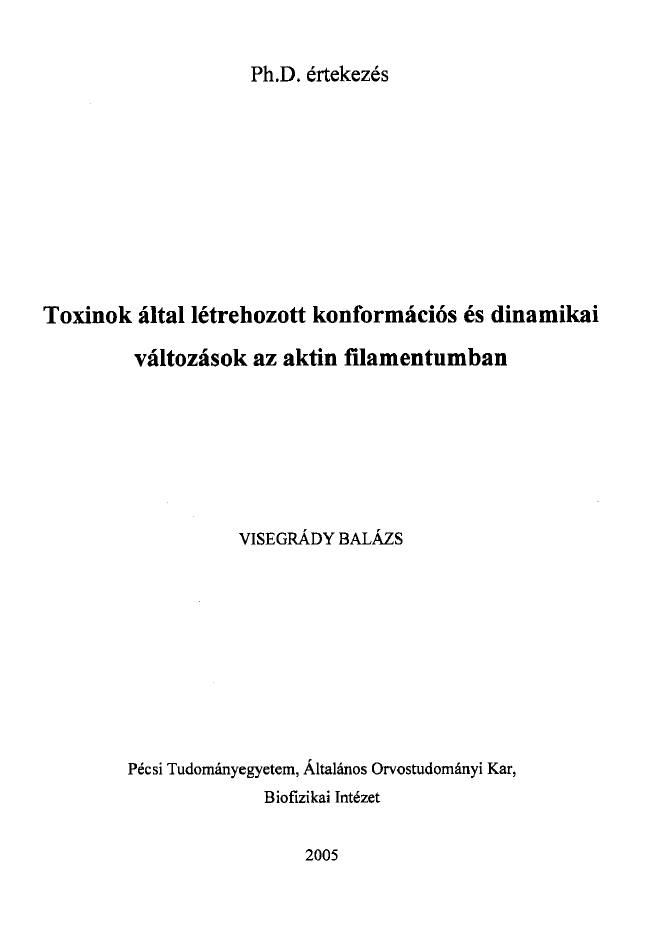Toxinok által létrehozott konformációs és dinamikai változások az aktin filamentumban
Abstract
Phalloidin, a cyclic peptide fromAmanita phalloides can tightly bind to actin filaments and stabilizes their structure (Faulstich et al., 1977; Miyamoto et al., 1986). Phalloidin stabilized actin filaments were extensively used in in vitro studies. Fluorescent derivatives of phalloidin (e.g.: rhodamine-phalloidin, fluorescein-phalloidin, eosin-phalloidin) were also applied to visualize the architecture of the actin cytoskeleton by fluorescence microscopic methods in intracellular studies. The effect of another cyclic peptide, jasplakinolide from a marine sponge (Jaspis johnstoni) on actin filaments is understood to a much lesser extent than that of phalloidin. It is known that jasplakinolide binds to F-actin, and stabilize it’s structure in vitro (Bubb et al., 1994). Jasplakinolide accelerates actin polymerization (Bubb et al., 1994), promotes actin polymerization under nonpolymerizing conditions. Although phalloidin can stabilize actin oligomers, similar effect from jasplakinolide was not observed (Spector et al., 1999). Jasplakinolide and phalloidin competitively bind to actin filament, which suggest that the binding sites of the two drugs are identical or similar in high extent (Senderowicz et al., 1995). Another important difference between the two drugs is that in contrast to phalloidin, jasplakinolide readily enters cells. It appears that the effect of jasplakinolide is similar to that of phalloidin in some aspects, while other effects are different for the two toxins. In this study we compared the effect of phalloidin and jasplakinolide on the dynamic properties and thermal stability of actin filaments.

